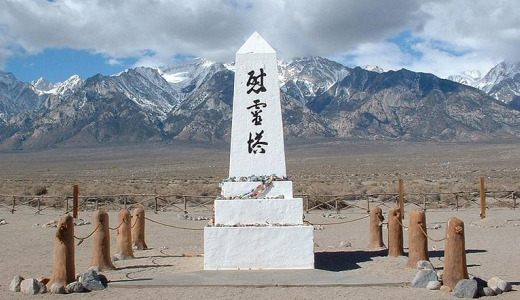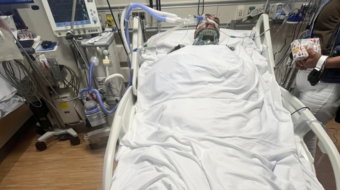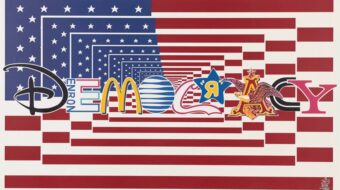
OWENS VALLEY, Calif. – Manzanar means “apple orchard” in Spanish. There was a significant community in Owens Valley, Calif., on the east side of the Sierras, founded in 1910 as a fruit growing colony. It thrived until water was diverted to Los Angeles via an aqueduct built by the L.A. Water District, which converted Owens Valley into a man-made desert.
During World War II it became the site of the first of 10 “relocation centers” to imprison 10,000 of the 12,000 people of Japanese ancestry living on the West Coast, 70 percent of whom were U.S. citizens. The remaining were aliens from Japan who were denied the opportunity to become citizens. It became a city one mile square, enclosed by barbed wire and guarded from towers by military police with searchlights and guns pointed inward.
The last weekend of April this year I joined approximately 70 people from Sacramento on the fifth annual pilgrimage, sponsored by the Florin Japanese American Citizens League, a caring, supportive group of former internees, students, Arab Americans and civil rights activists, to visit Manzanar, which is now a national historic site.
This is where I was incarcerated with my family almost 70 years ago. I remembered the heartache and loss which my parents and others experienced, having had to get rid of – for less than 10 percent of their value – or store all of their worldly goods in a matter of a few days or weeks, and be prepared to take only what they could carry to a forced extended “camp-out” in a location yet unknown to them.
Getting there, 70 years ago, we were distressed to see the flimsy barracks made of ¼-inch plywood and covered only with tar paper, the dust seeping through the knot holes and cracks. We were to sleep on metal cots and we filled out “mattresses” with straw. My mother, with beginning stages of poly-arthritis, had to sleep on a cot with a straw-filled mattress as well. We ate in a mess hall, and had to go outside our “apartment” to go to the latrine, shower and do our laundry, even when the weather was rainy or snowy – an the dust blew the rest of the time.
Since there was a shortage of teachers at first, I was unable to continue high school, so I found a job as a typist, earning $12 a month. Then I applied for and was hired as a crafts teacher. As a “professional” I earned $19 a month.
After about one and a half years of internment, in September 1943, with the help of Quakers and others, I was allowed to leave camp to attend Western Michigan College in Kalamazoo, Mich. After my first year I was unable to get a job because of discrimination. My brother, living in Minnesota, suggested I move up there. I was able to get a job in St. Paul, Minn., then learned about, applied for and was accepted into a nursing program at the University of Minnesota.
My parents remained in Manzanar for three and half years. Then they received transportation to Los Angeles and $25. My mother had to be placed in a nursing home. My father got a job as a “houseboy” to start all over again. Three months after he was released from camp, he was hit and killed by someone driving a truck.
The idea of the pilgrimage this year was to educate and raise public awareness about what happened to one ethnic group and to make every effort to prevent the violation of the constitutional rights of others.
What happened to Arab Americans after 9/11 is a case in point.
The ongoing question is: Could this happen again?
Grace Coan is a peace activist in Sacramento, Calif.
Photo: Cemetery shrine at Manzanar Japanese internment camp, Owens Valley, Calif. The inscription, in Japanese, reads, “Monument to console the souls of the dead.” The inscription on the back reads, “August 1943” and “erected by the Manzanar Japanese.” This 2002 photo shows the shrine draped in strings of origami with offerings of personal items left by survivors and visitors. The National Park Service periodically itemizes and collects these items in order to gauge the changing feelings of visitors. (Daniel Mayer, commons.wikimedia.org)










